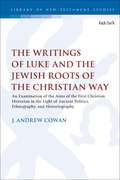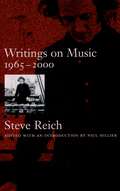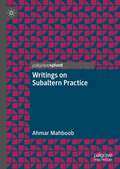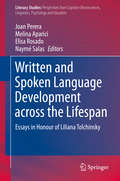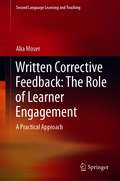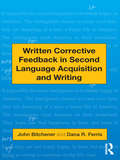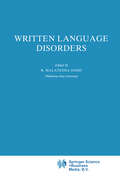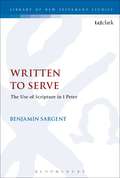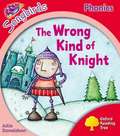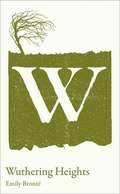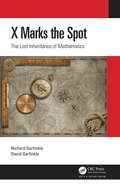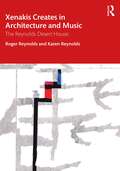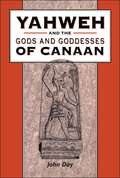- Table View
- List View
The Writings of Luke and the Jewish Roots of the Christian Way: An Examination of the Aims of the First Christian Historian in the Light of Ancient Politics, Ethnography, and Historiography (The Library of New Testament Studies)
by J. Andrew CowanJ. Andrew Cowan challenges the popular theory that Luke sought to boost the cultural status of the early Christian movement by emphasising its Jewish roots – associating the new church with an ancient and therefore respected heritage. Cowan instead argues that Luke draws upon the traditions of the Old Testament and its supporting texts as a reassurance to Christians, promising that Jesus' life, his works and the church that follow legitimately provide fulfilment of God's salvific plan.Cowan's argument compares Luke's writings to two near-contemporaries, Dionysius of Halicarnassus and T. Flavius Josephus, both of whom emphasized the ancient heritage of a people with cultural or political aims in view, exploring how the writings of Luke do not reflect the same cultural values or pursue the same ends. Challenging assumptions on Luke's supposed attempts to assuage political concerns, capitalize on antiquity, and present Christianity as an inner-Jewish sect, Cowan counters with arguments for Luke being critical of over-valuing tradition and defining the Jewish people as resistant to God and His messages. Cowan concludes with the argument that the apostle does not strive for legitimisation of the new church by previous cultural standards, but instead provides theological reassurance to Christians that God's plan has been fulfilled, with implications for broader debate.
Writings on Music, 1965-2000
by Steve ReichIn the mid-1960s, Steve Reich radically renewed the musical landscape with a back-to-basics sound that came to be called Minimalism. These early works, characterized by a relentless pulse and static harmony, focused single-mindedly on the process of gradual rhythmic change. Throughout his career, Reich has continued to reinvigorate the music world, drawing from a wide array of classical, popular, sacred, and non-western idioms. His works reflect the steady evolution of an original musical mind. Writings on Music documents the creative journey of this thoughtful, groundbreaking composer. These 64 short pieces include Reich's 1968 essay "Music as a Gradual Process," widely considered one of the most influential pieces of music theory in the second half of the 20th century. Subsequent essays, articles, and interviews treat Reich's early work with tape and phase shifting, showing its development into more recent work with speech melody and instrumental music. Other essays recount his exposure to non-western music -- African drumming, Balinese gamelan, Hebrew cantillation -- and the influence of these musics as structures and not as sounds. The writings include Reich's reactions to and appreciations of the works of his contemporaries (John Cage, Luciano Berio, Morton Feldman, Gyorgy Ligeti) and older influences (Kurt Weill, Schoenberg). Each major work of the composer's career is also explored through notes written for performances and recordings. Paul Hillier, himself a respected figure in the early music and new music worlds, has revisited these texts, working with the author to clarify their central narrative: the aesthetic and intellectual development of an influential composer. For long-time listeners and young musicians recently introduced to his work, this book provides an opportunity to get to know Reich's music in greater depth and perspective.
Writings on Music, 1965-2000
by Steve ReichIn the mid-1960s, Steve Reich radically renewed the musical landscape with a back-to-basics sound that came to be called Minimalism. These early works, characterized by a relentless pulse and static harmony, focused single-mindedly on the process of gradual rhythmic change. Throughout his career, Reich has continued to reinvigorate the music world, drawing from a wide array of classical, popular, sacred, and non-western idioms. His works reflect the steady evolution of an original musical mind. Writings on Music documents the creative journey of this thoughtful, groundbreaking composer. These 64 short pieces include Reich's 1968 essay "Music as a Gradual Process," widely considered one of the most influential pieces of music theory in the second half of the 20th century. Subsequent essays, articles, and interviews treat Reich's early work with tape and phase shifting, showing its development into more recent work with speech melody and instrumental music. Other essays recount his exposure to non-western music -- African drumming, Balinese gamelan, Hebrew cantillation -- and the influence of these musics as structures and not as sounds. The writings include Reich's reactions to and appreciations of the works of his contemporaries (John Cage, Luciano Berio, Morton Feldman, Gyorgy Ligeti) and older influences (Kurt Weill, Schoenberg). Each major work of the composer's career is also explored through notes written for performances and recordings. Paul Hillier, himself a respected figure in the early music and new music worlds, has revisited these texts, working with the author to clarify their central narrative: the aesthetic and intellectual development of an influential composer. For long-time listeners and young musicians recently introduced to his work, this book provides an opportunity to get to know Reich's music in greater depth and perspective.
Writings on Subaltern Practice
by Ahmar MahboobSubaltern theory emerged as a small voice within academia decades ago. Over time, this work generated significant debate and numerous publications, talks, and conferences. However, little has changed in the experienced lives of the masses. This led people to wonder: “the subalterns seem to have a voice, but can they take action?”; or, in other words, is there subaltern practice?This collection of essays and poems, written with a broad audience in mind, hopes to demonstrate not just how the subaltern can identify and question hegemonic practices, but how they can create alternative frameworks and material that enable themselves and their communities. In doing so, this book aims to demonstrate not just how deep the colonial poisons run, but also how to detoxify ourselves and the environment around us.The writings included in this book study the inequalities that we experience in and around us and suggest actions and practices that can help us regain harmony. It is a call for action and a sharing of ideas that can enable us to regain balance and fulfil our human responsibilities.
Written and Spoken Language Development across the Lifespan: Essays in Honour of Liliana Tolchinsky (Literacy Studies #11)
by Joan Perera Melina Aparici Elisa Rosado Naymé SalasThis multidisciplinary volume offers insights on oral and written language development and how it takes place in literate societies. The volume covers topics from early to late language development, its interaction with literacy practices, including several languages, monolingual and multilingual contexts, different scripts, as well as typical and atypical development. Inspired by the work of Liliana Tolchinsky, a leading expert in language and literacy development, a group of internationally renowned scholars offers a state-of-the-art overview of current thinking in language development in literate societies in its broadest sense.Contributors offer a personal tribute to Liliana Tolchinsky in the opening section.
Written Assessment in Medical Education
by Hosam Eldeen Elsadig Gasmalla Alaa AbuElgasim Mohamed Ibrahim Majed M. Wadi Mohamed H. TahaThis book is an indispensable yet simple reference for the daily use of a medical teacher. It addresses the needs of medical teachers interested in providing instruction and assessment in writing and written language, offering detailed guidance in simple and straightforward language. The book goes beyond mere description; it provides many practical examples, valuable materials that can be utilized in training workshops and medical educator professional development courses. The book will be of interest to novice and experienced teachers in medical schools, in addition to university teachers in other health professions, such as dentistry, pharmacy, nursing, medical laboratory, physiotherapy, biomedical engineering and veterinary medicine.
Written Corrective Feedback: A Practical Approach (Second Language Learning and Teaching)
by Alia MoserThe book provides new insights into written corrective feedback by describing students’ expectations as well as mediating factors that influence their engagement with it. The book draws on an extensive dataset to illustrate secondary school students’ behavioural, cognitive and emotional engagement with written corrective feedback and the extent to which mediating factors, such as teachers, peers, feedback options, attitudes and emotions, foster or hinder it. It shows why teachers need to provide students with the purpose of the corrective feedback they provide, explain how such feedback works and introduce strategies that can be employed to engage with it. Based on the finding that a combination of several feedback types is essential to ensure learner engagement, the book also provides an extensive description and multiple authentic examples of the Engagement-Feedback-Mediator Model that was developed in the context of this study.
Written Corrective Feedback in Second Language Acquisition and Writing
by John Bitchener Dana R. FerrisWhat should language and writing teachers do about giving students written corrective feedback? This book surveys theory, research, and practice on the important and sometimes controversial issue of written corrective feedback, also known as “error/grammar correction,” and its impact on second language acquisition and second language writing development. Offering state-of-the-art treatment of a topic that is highly relevant to both researchers and practitioners, it critically analyzes and synthesizes several parallel and complementary strands of research — work on error/feedback (both oral and written) in SLA and studies of the impact of error correction in writing/composition courses — and addresses practical applications. Drawing from both second language acquisition and writing/composition literature, this volume is the first to intentionally connect these two separate but important lines of inquiry.
Written Corrective Feedback in Second Language Acquisition and Writing
by John Bitchener Dana R. FerrisWhat should language and writing teachers do about giving students written corrective feedback? This book surveys theory, research, and practice on the important and sometimes controversial issue of written corrective feedback, also known as “error/grammar correction,” and its impact on second language acquisition and second language writing development. Offering state-of-the-art treatment of a topic that is highly relevant to both researchers and practitioners, it critically analyzes and synthesizes several parallel and complementary strands of research — work on error/feedback (both oral and written) in SLA and studies of the impact of error correction in writing/composition courses — and addresses practical applications. Drawing from both second language acquisition and writing/composition literature, this volume is the first to intentionally connect these two separate but important lines of inquiry.
Written Expression
by Charles Allen Glenn Pethel India PodsenThis book offers concrete advice and handy examples to sharpen your writing skills. Filled with sample letters, memos, and reports (also available on an accompanying disk with workbook), this book will help you successfully attack your in?basket. The writing samples are organized according to the particular audience you want to reach: faculty and staff, parents, central office, peers, local community, etc.
Written Expression
by Charles Allen Glenn Pethel India PodsenThis book offers concrete advice and handy examples to sharpen your writing skills. Filled with sample letters, memos, and reports (also available on an accompanying disk with workbook), this book will help you successfully attack your in?basket. The writing samples are organized according to the particular audience you want to reach: faculty and staff, parents, central office, peers, local community, etc.
Written Expression Disk with Workbook
by India PodsenThis workbook provides principals with the tools they need to put into practice the concepts outlined in Written Expression: the Principal's Survival Guide, a volume in Eye On Education's hardcover series, The School Leadership Library. The workbook expands the topics covered in the hardcover book and provides additional examples. On the diskette you will find many of the sample documents printed in both the hardcover book and this workbook. You may use these files as templates for your own writing tasks.
Written Expression Disk with Workbook
by India PodsenThis workbook provides principals with the tools they need to put into practice the concepts outlined in Written Expression: the Principal's Survival Guide, a volume in Eye On Education's hardcover series, The School Leadership Library. The workbook expands the topics covered in the hardcover book and provides additional examples. On the diskette you will find many of the sample documents printed in both the hardcover book and this workbook. You may use these files as templates for your own writing tasks.
Written Language Disorders (Neuropsychology and Cognition #2)
by R. MalateshaJoshiAlthough anecdotal reports of loss of once-acquired reading ability was noticed in the individuals who had sustained brain damage as early as the year AD. 30, systematic enquires of alexia were not undertaken until the latter part of the nineteenth century. The two anatomo-pathological studies carried out by Dejerine in 1891 and 1892 mark the beginning of scholarly investigation of reading failure. Interestingly, the study of de velopmental reading disability also began to receive attention at about the same time when Pringle Morgan described the case of a 14-year-old boy who had great difficulty in reading and writing. Since then sporadic reports of developmental reading-writing failure began to appear in medi cal and educational journals even though such investigation went on at an unhurried pace. In the past two decades, however, the situation has changed enormously and hundreds of articles that have investigated developmental and acquired cognitive disabilities have been published. Disorders of spoken language and written language are two areas that have been extensively addressed by these articles. Those who study disorders of language come from a wide variety of backgrounds and their reports are also published in a variety of journals. The purpose of the present volume is to bring some important research findings of written language disorders together and present them in a coherent format. In Chapter 1, Joshi and Aaron challenge the validity of the notion of the putative "poor speller but good reader'.
Written To Serve: The Use of Scripture in 1 Peter (The Library of New Testament Studies #547)
by Benjamin SargentThe use of Scripture in 1 Peter has been subject to much extensive analysis in the last thirty years. In Written to Serve Benjamin Sargent offers an up to date and comprehensive analysis of how 1 Pet 1.10-12 offers a 'hermeneutic,' providing an insight into how Scripture is interpreted in the letter. Sargent also argues that the relation of 1.10-12 has been misunderstood. Rather than offering a Christological hermeneutic with a focus on the suffering and glories of Christ, Sargent asserts that the primary importance of 1.10-12 is its orientation of the prophetic witness towards the eschatological community as an act of service. Similarly, rather than offering a theological narrative of continuity between Israel and Christian communities, 1.10-12 may be seen to suggest a narrative of profound discontinuity in which the community in the present is elevated above God's people of the past.
The Wrong Kind Of Knight (Oxford Reading Tree)
by Julia Donaldson Clare KirtleyIn The Wrong Kind of Knight Nasim the knight likes reading, writing and knitting. Can he fight the dragon? Level 4 Songbirds Phonics books focus on different spelling patterns for the long vowel sounds ee as in tree, ie as in tie, oa as in boat and ai as in train. The focus phonics in this book are ee as in tree, ie as in tie, n as in not and r as in ran. Oxford Reading Tree Songbirds Phonics are highly decodable, beautifully illustrated stories written by best-selling author Julia Donaldson. The series contains a variety of storylines, rhyme, rhythm and genre ensuring there is something for every child to enjoy. The rich, patterned language in the stories is decodable making them perfect for children to practise their phonics. Songbirds Phonics can be used as a complete phonics programme, or the individual books can be used for phonics practice alongside any other phonics programme. Each book contains inside cover notes to support parents/carers with their children's phonics practice and comprehension.
WSQ, Level 2: The Trampoline
by Tessa KrailingBen wants a trampoline at home. What is his dad's response? Wellington Square is designed to meet the needs of children aged 7-13+ who are having difficulty in learning to read. It provides straightforward progression through all 5 levels of the scheme, from wordless picture books to storybooks with full-text. Wellington Square widens your pupils' reading experience through imaginative and stimulating support material.
Wuthering Heights (Collins Classroom Classics Ser.)
by Emily Brontë Maria CairneyExam board: AQA A, Edexcel, Cambridge Assessment International Education Level & Subject: AS and A Level English Literature First teaching: September 2015 First examination: June 2017 This edition of Wuthering Heights provides depth and context for A Level students, with the complete novel in an easy to read format, and a detailed introduction and bespoke glossary written by an experienced A Level teacher with academic expertise in the area. · Affordable high quality complete text of Wuthering Heights, ideal for AS and A Level Literature · Perfectly pitched introductions provide the depth and demand required by AS and A Level · Explore the contemporary context, Emily Brontë's writing, the novel's critical reception and subsequent interpretations for a deeper reading of the text · Expand your further reading with a list of key articles and critical and theoretical texts · Improve your understanding of the novel with unfamiliar concepts and culturally-specific terms defined in the glossary
X Marks the Spot: The Lost Inheritance of Mathematics
by Richard Garfinkle David GarfinkleX Marks the Spot is written from the point of view of the users of mathematics. Since the beginning, mathematical concepts and techniques (such as arithmetic and geometry) were created as tools with a particular purpose like counting sheep and measuring land areas. Understanding those purposes leads to a greater understanding of why mathematics developed as it did. Later mathematical concepts came from a process of abstracting and generalizing earlier mathematics. This process of abstraction is very powerful, but often comes at the price of intuition and understanding. This book strives to give a guided tour of the development of various branches of mathematics (and what they’re used for) that will give the reader this intuitive understanding. Features Treats mathematical techniques as tools, and areas of mathematics as the result of abstracting and generalizing earlier mathematical tools Written in a relaxed conversational and occasionally humorous style making it easy to follow even when discussing esoterica. Unravels how mathematicians think, demystifying math and connecting it to the ways non-mathematicians think and connecting math to people’s lives Discusses how math education can be improved in order to prevent future generations from being turned off by math.
X Marks the Spot: The Lost Inheritance of Mathematics
by Richard Garfinkle David GarfinkleX Marks the Spot is written from the point of view of the users of mathematics. Since the beginning, mathematical concepts and techniques (such as arithmetic and geometry) were created as tools with a particular purpose like counting sheep and measuring land areas. Understanding those purposes leads to a greater understanding of why mathematics developed as it did. Later mathematical concepts came from a process of abstracting and generalizing earlier mathematics. This process of abstraction is very powerful, but often comes at the price of intuition and understanding. This book strives to give a guided tour of the development of various branches of mathematics (and what they’re used for) that will give the reader this intuitive understanding. Features Treats mathematical techniques as tools, and areas of mathematics as the result of abstracting and generalizing earlier mathematical tools Written in a relaxed conversational and occasionally humorous style making it easy to follow even when discussing esoterica. Unravels how mathematicians think, demystifying math and connecting it to the ways non-mathematicians think and connecting math to people’s lives Discusses how math education can be improved in order to prevent future generations from being turned off by math.
Xenakis Creates in Architecture and Music: The Reynolds Desert House
by Roger Reynolds Karen ReynoldsXenakis Creates in Architecture and Music describes the collaborative interaction of internationally acclaimed composer Roger Reynolds, musician Karen Reynolds, and musically inspired composer, engineer, and architect Iannis Xenakis (1922-2001) to create a house design, The Reynolds Desert House. The process combined aesthetics and intuition with mathematical systems, showcasing how art and science are balanced—by way of music and architecture—to address the essential technical aspects of music along with the role of emotion and energy. The book analyzes three representative chamber works and presents a trove of primary sources: letters, diaries, notes, photographs, sketches, and person-to-person conversations. What emerges are patterns of direct parallels between how Xenakis characterized the process of musical creation and his design of The Reynolds Desert House. Xenakis Creates in Architecture and Music is a testament to the singularly innovative and creative mind of Iannis Xenakis. Supplementary materials—including color reproductions of black and white images in the book—can be found at: www.rogerreynolds.com/xenakisreynoldsroutledge.html
Xenakis Creates in Architecture and Music: The Reynolds Desert House
by Roger Reynolds Karen ReynoldsXenakis Creates in Architecture and Music describes the collaborative interaction of internationally acclaimed composer Roger Reynolds, musician Karen Reynolds, and musically inspired composer, engineer, and architect Iannis Xenakis (1922-2001) to create a house design, The Reynolds Desert House. The process combined aesthetics and intuition with mathematical systems, showcasing how art and science are balanced—by way of music and architecture—to address the essential technical aspects of music along with the role of emotion and energy. The book analyzes three representative chamber works and presents a trove of primary sources: letters, diaries, notes, photographs, sketches, and person-to-person conversations. What emerges are patterns of direct parallels between how Xenakis characterized the process of musical creation and his design of The Reynolds Desert House. Xenakis Creates in Architecture and Music is a testament to the singularly innovative and creative mind of Iannis Xenakis. Supplementary materials—including color reproductions of black and white images in the book—can be found at: www.rogerreynolds.com/xenakisreynoldsroutledge.html
Yachtmaster for Sail and Power 6th edition: The Essential Manual for RYA Yachtmaster® Certificates of Competence
by Alison Noice Roger SeymourNow in its sixth edition, Yachtmaster for Sail and Power is an essential companion for anyone enrolling on the RYA Coastal Skipper/Yachtmaster Offshore course.This highly respected and refreshingly practical study guide covers the whole syllabus in detail, illustrated with colour photographs, charts and worked examples throughout.Contents includes:· Chartwork – with useful worked examples · Electronic navigation – how to use the latest technology for safe navigation: radar, electronic chart plotting and GPS· Pilotage – buoyage fully explained and illustrated · Communications – the latest information on maritime communications including GMDSS · Weather – the elements of meteorology, weather sources and forecasts · Safety and survival – new SOLAS regulations· Stability and buoyancy – principles simply explainedIncluding the latest updates, new artwork and a modern, user-friendly design, this 6th edition complements the syllabus and assists with exam preparation.
Yachtmaster for Sail and Power 6th edition: The Essential Manual for RYA Yachtmaster® Certificates of Competence
by Alison Noice Roger SeymourNow in its sixth edition, Yachtmaster for Sail and Power is an essential companion for anyone enrolling on the RYA Coastal Skipper/Yachtmaster Offshore course.This highly respected and refreshingly practical study guide covers the whole syllabus in detail, illustrated with colour photographs, charts and worked examples throughout.Contents includes:· Chartwork – with useful worked examples · Electronic navigation – how to use the latest technology for safe navigation: radar, electronic chart plotting and GPS· Pilotage – buoyage fully explained and illustrated · Communications – the latest information on maritime communications including GMDSS · Weather – the elements of meteorology, weather sources and forecasts · Safety and survival – new SOLAS regulations· Stability and buoyancy – principles simply explainedIncluding the latest updates, new artwork and a modern, user-friendly design, this 6th edition complements the syllabus and assists with exam preparation.
Yahweh and the Gods and Goddesses of Canaan (The Library of Hebrew Bible/Old Testament Studies)
by John DayThis masterly book is the climax of over twenty-five years of study of the impact of Canaanite religion and mythology on ancient Israel and the Old Testament. It is John Day's magnum opus in which he sets forth all his main arguments and conclusions on the subject. The work considers in detail the relationship between Yahweh and the various gods and goddesses of Canaan, including the leading gods El and Baal, the great goddesses (Asherah, Astarte and Anat), astral deities (Sun, Moon and Lucifer), and underworld deities (Mot, Resheph, Molech and the Rephaim). Day assesses both what Yahwism assimilated from these deities and what it came to reject. More generally he discusses the impact of Canaanite polytheism on ancient Israel and how monotheism was eventually achieved.
